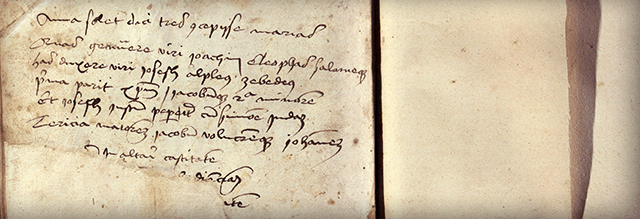Files
Abstract
This paper presents an overview of the contents of the new database of written marginal notations in Portland State University’s fifteenth-century printed codex, and some of the research threads that can be taken up from a study of those notations.
The motive for this project was an interest in readership usage of the codex and the two books contained within it. It begins by discussing terms that Andi Johnson and I elected to use to tag and name different categories of features, then I discuss some of the findings and possible future research avenues that can expand on them.
Finally, in the appendix, I list written marginalia which are, at least at first glance, deviations from the norm of isolated “nota” and “nota bene.” A number of diverse hands indicate that the codex may contain marks from at least ten different readers. Also of note is an abrupt cut-off of all marginal notation on fol. 72 (of 101 fols.) of the Malleus Maleficarum, which may denote a lack of reader interest in the third section of the book.
Publication Date
2022
Disciplines
History | Medieval History | Medieval Studies
Persistent Identifier
https://archives.pdx.edu/ds/psu/38085
Recommended Citation
Barnack, Samuel, "Review, Introduction, and Preliminary Documentation of Marginalia in Portland State University’s Fasciculus Temporum/Malleus Maleficarum Sammelband" (2022). Extra-Textual Elements. 9.
https://archives.pdx.edu/ds/psu/38085




Comments
This essay is part of a collaborative project between Samuel Barnack and Andi Johnson. Please see also Andi Johnson, "Database of Marginal Notation in the PSU 1490 Codex," in this collection and linked as a supplemental file above.
This essay is a research project written for Professor John Ott's Spring 2022 Medieval History seminar on PSU Library Special Collections' Malleus maleficarum and Fasciculus temporum codex.